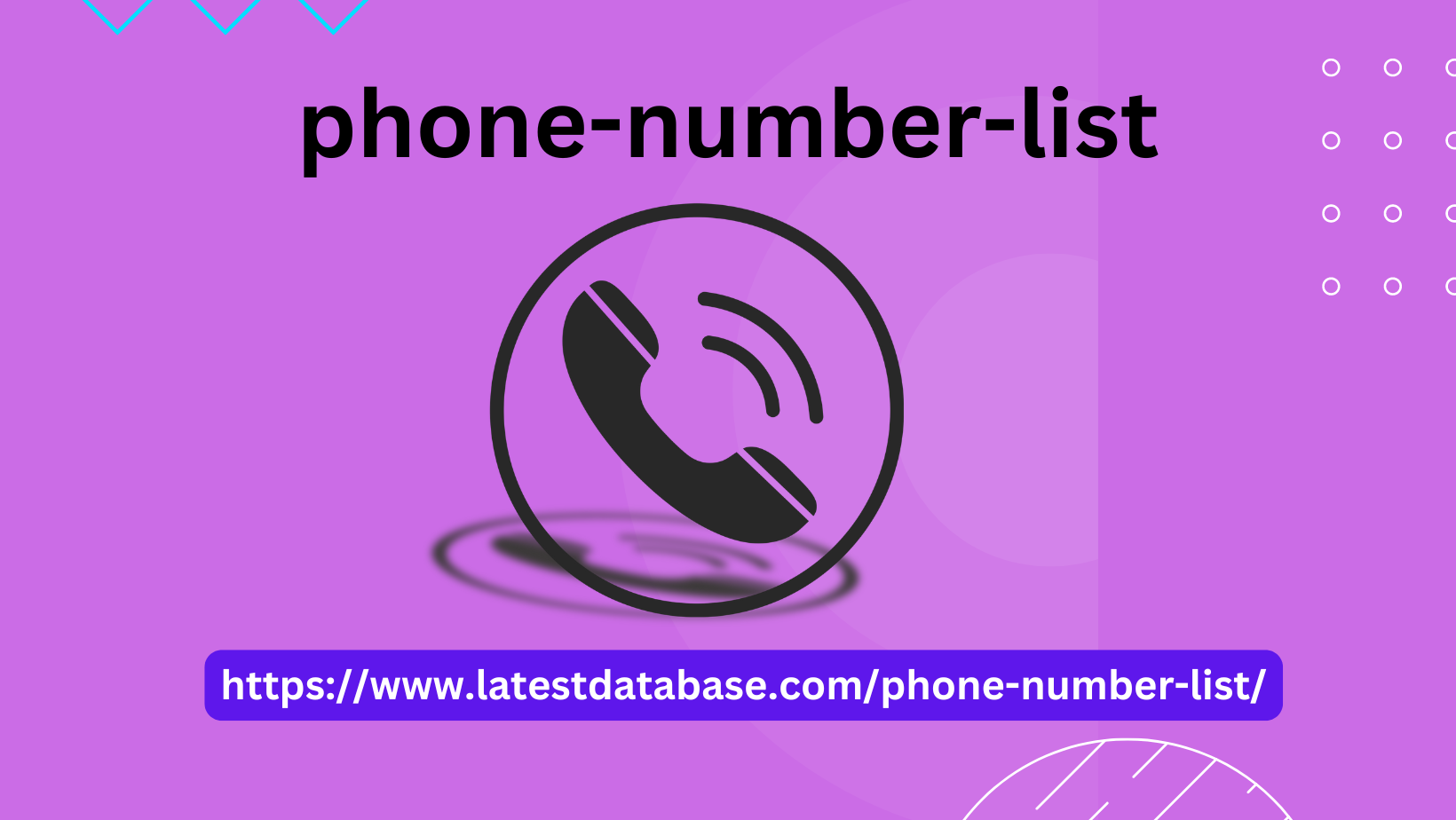Mobile phone usage in Afghanistan has seen remarkable growth over the past decade. The country, once reliant on traditional forms of communication, has embraced mobile technology, leading to an explosion in mobile subscribers and mobile-based services. Understanding the nuances of Afghanistan mobile number data is crucial for businesses, researchers, and policymakers looking to engage with this burgeoning market. This article delves into the key aspects of Afghanistan’s mobile number data, including its significance, regulatory framework, and the impact of mobile penetration on the country’s Afghanistan Phone Number List socio-economic landscape.
The Significance of Mobile Number Data in Afghanistan
Mobile number data in Architect List Afghanistan is not just a collection of numbers; it represents a gateway to understanding the digital footprint of millions of Afghans. The data encompasses various aspects such as network providers, geographical distribution, user demographics, and usage patterns. These details are valuable for multiple reasons:
- Market Analysis: For businesses looking to expand into Afghanistan, mobile number data provides insight into market size and potential customer segments. By analyzing this data, companies can tailor their marketing strategies to better target specific groups, whether by age, location, or socioeconomic status.
- Security and Verification: Mobile numbers in Afghanistan are often used for identity verification and security purposes. Many services, from banking to social media, rely on mobile numbers to authenticate users. Thus, understanding the structure and distribution of these numbers is essential for enhancing cybersecurity measures and reducing fraud.
- Government Planning and Policy: For policymakers, mobile number data can inform decisions related to infrastructure development, resource allocation, and emergency response planning. Accurate data helps in understanding population density and mobility, which is critical for efficient public service delivery.
Regulatory Framework Governing Mobile Data
Afghanistan’s telecommunications sector operates under a regulatory framework designed to ensure fair competition, protect consumer rights, and promote sustainable development. The Afghanistan Telecommunications Regulatory Authority (ATRA) is the main body responsible for overseeing the sector, including the management of mobile number data.
H3: Role of ATRA in Data Management
ATRA plays a pivotal role in managing mobile number data in Afghanistan. It sets the guidelines for telecom operators regarding the allocation and use of mobile numbers. This includes ensuring that numbers are allocated efficiently and that there is no wastage of resources. ATRA also monitors compliance with international standards, ensuring that Afghanistan’s telecom sector remains competitive and aligned with global practices.
H3: Compliance and Consumer Protection
Compliance with regulations is essential for maintaining the integrity of mobile number data. Telecom operators must adhere to rules related to data privacy and security. This ensures that consumer information is protected from misuse and unauthorized access. ATRA enforces these regulations through regular audits and assessments, providing a framework within which telecom operators must operate to protect consumers’ rights and data.
Impact of Mobile Penetration on Afghanistan’s Socio-Economic Landscape
The widespread use of mobile phones in Afghanistan has had profound effects on the socio-economic fabric of the country. Mobile penetration has not only changed the way Afghans communicate but has also influenced various sectors such as finance, education, and healthcare.
H2: Economic Growth and Mobile Commerce
Mobile technology has been a catalyst for economic growth in Afghanistan. With the rise of mobile money services, more Afghans have access to financial services than ever before. This has facilitated trade and commerce, allowing even those in remote areas to participate in the economy. Mobile commerce has enabled small businesses to reach new markets, promoting entrepreneurship and job creation.
H2: Education and Information Access
Education in Afghanistan has greatly benefited from mobile technology. Mobile number data has been instrumental in deploying educational resources and services, especially in rural areas where traditional educational infrastructure is lacking. Through mobile phones, students can access online learning platforms and educational apps, bridging the gap between urban and rural education.
H2: Healthcare and Mobile Outreach
Mobile phones have also transformed healthcare delivery in Afghanistan. Health workers use mobile technology to reach remote communities, provide health education, and monitor health trends. Mobile number data helps in planning and executing outreach programs, ensuring that healthcare services are distributed efficiently across the country.
Challenges in Managing Mobile Number Data
Despite the positive impacts, managing mobile number data in Afghanistan comes with its own set of challenges. Issues such as data privacy, network security, and the digital divide pose significant hurdles.
H3: Data Privacy Concerns
Data privacy is a major concern in Afghanistan’s telecom sector. With the increasing reliance on mobile numbers for various services, the risk of data breaches and unauthorized access has grown. There is a need for robust data protection laws and enforcement mechanisms to safeguard consumer information and maintain trust in mobile services.
H3: Bridging the Digital Divide
The digital divide remains a significant challenge in Afghanistan. While mobile penetration is high in urban areas, many rural regions still lack adequate mobile coverage and internet access. This disparity limits the benefits of mobile technology for a large portion of the population. Efforts are needed to expand network infrastructure and make mobile services more accessible and affordable for everyone.
Future Outlook for Mobile Number Data in Afghanistan
The future of mobile number data in Afghanistan looks promising, with continued growth expected in the coming years. As the country recovers from conflict and political instability, there is potential for further expansion of mobile services and infrastructure development. Investment in technology and digital literacy will be key drivers in harnessing the full potential of mobile number data.
Conclusion
Afghanistan’s mobile number data is a valuable asset that offers insights into the country’s digital landscape. From economic growth to social development, mobile technology has played a transformative role in Afghanistan. However, managing this data effectively requires a robust regulatory framework, attention to data privacy, and efforts to bridge the digital divide. By addressing these challenges, Afghanistan can leverage mobile number data to foster inclusive growth and development.

